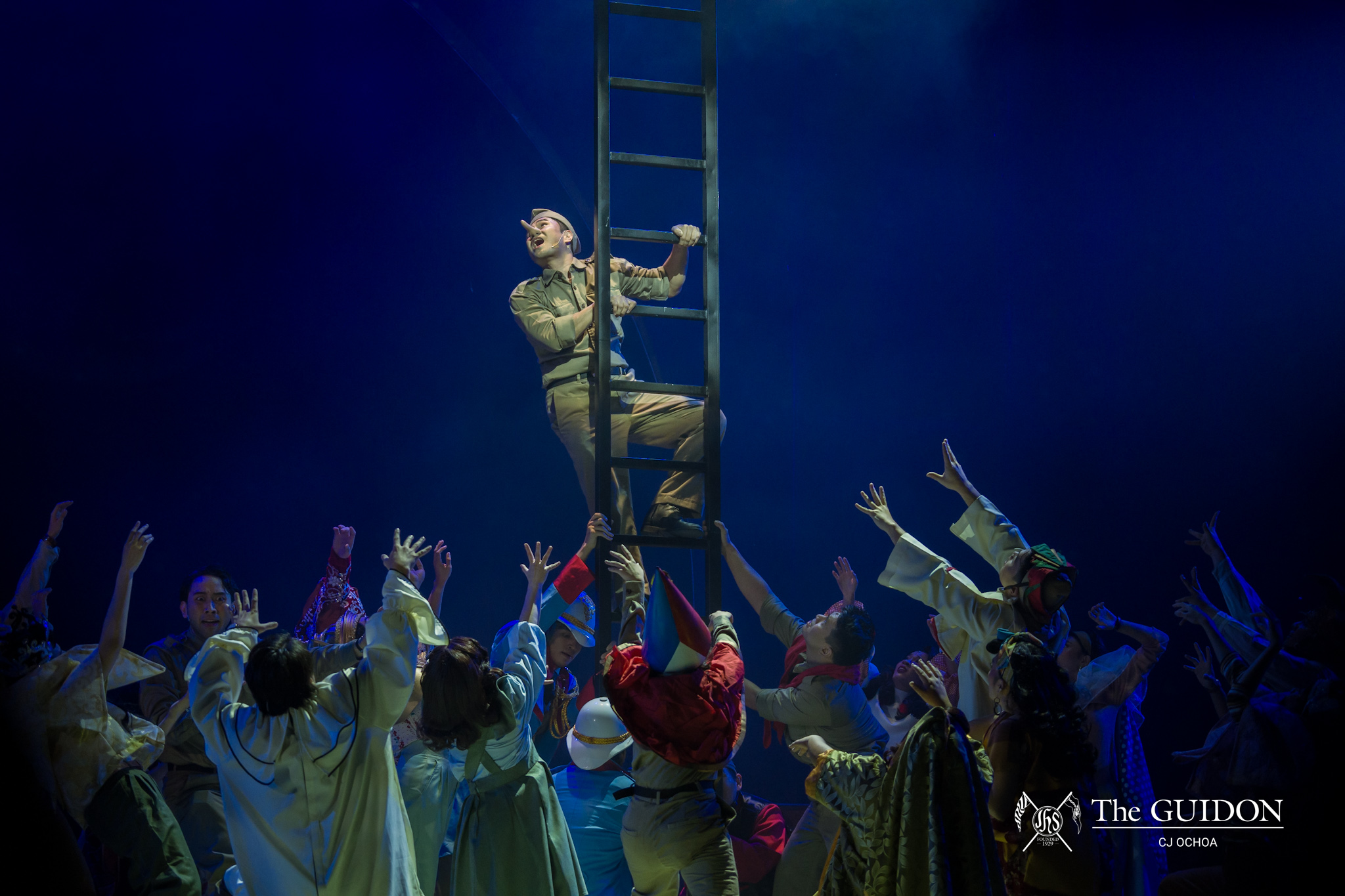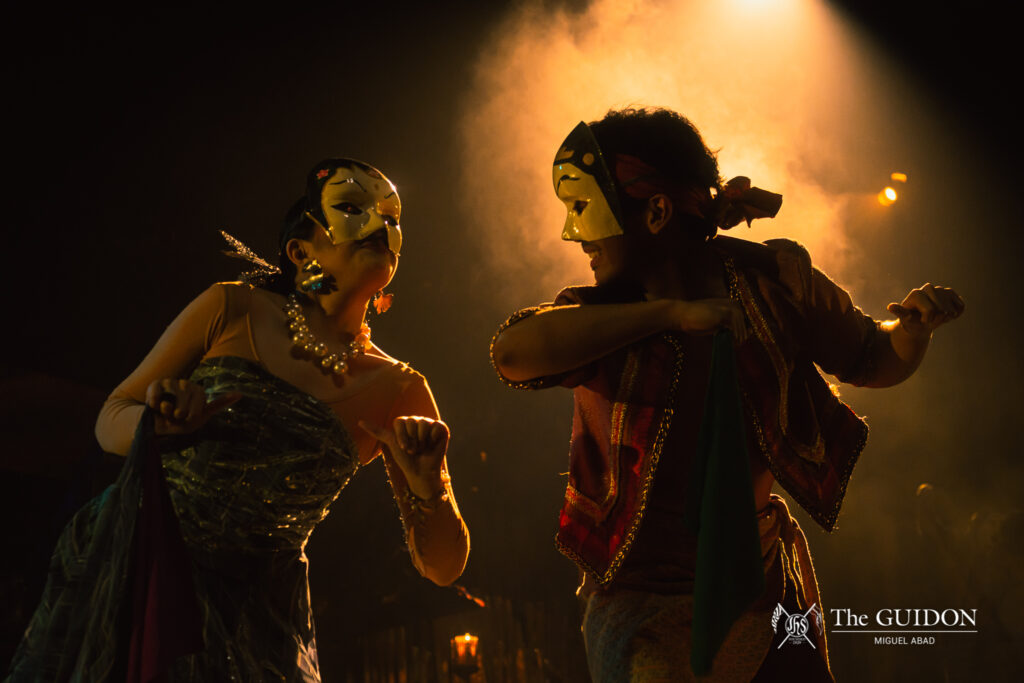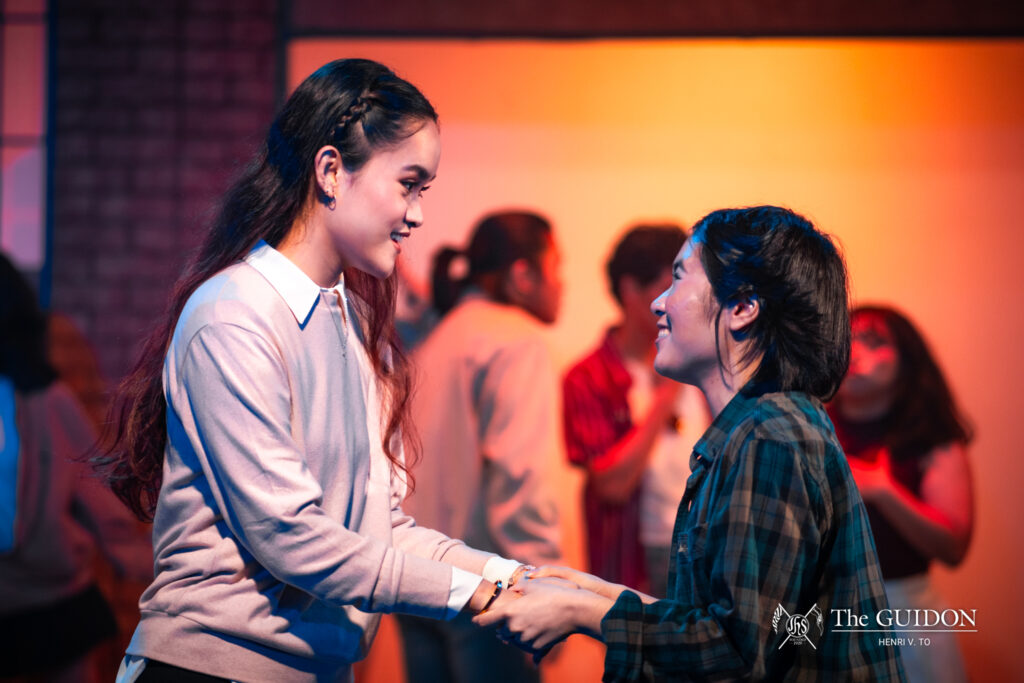TO LOVE is a political act, and the latest run of Mula Sa Buwan fully embodies this statement with both a bigger spectacle and a deeper heart in its storytelling.
It has been almost two years since this adaptation of French dramatist Edmond Rostand’s Cyrano de Bergerac (1897) last found its home at the Samsung Performing Arts Theater, Makati City. An official proshot and a live cast recording album later, the musical is bolder than ever with its captivating cast and more refined production.
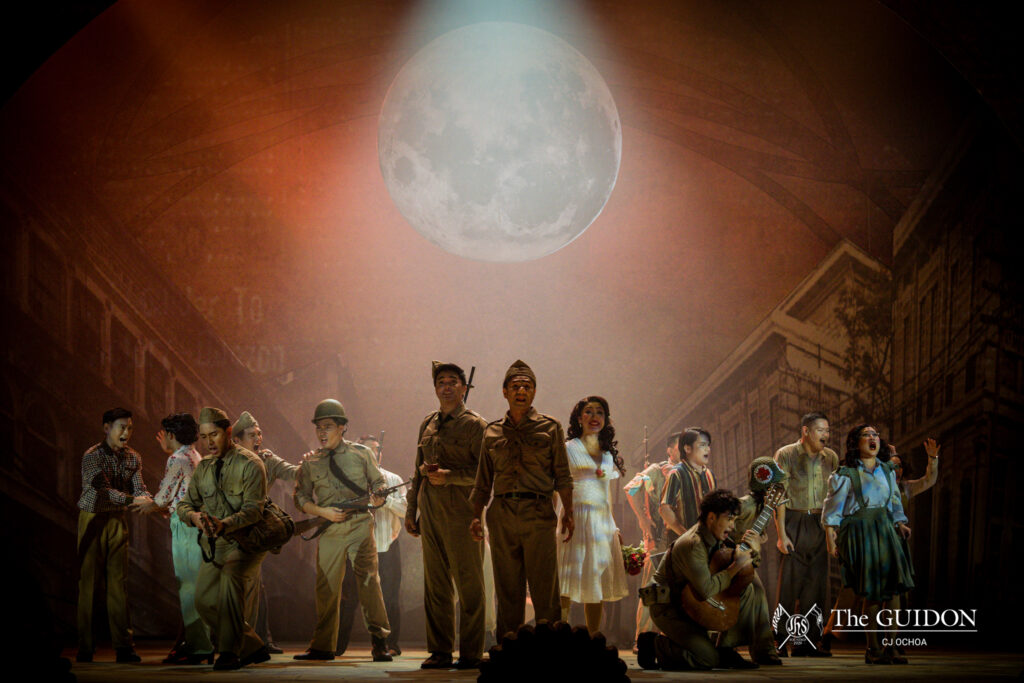
Mula Sa Buwan’s story is one that has been retold time and again: an ugly duckling falling in love with a beautiful swan, a longing that can only be expressed in love letters, and a tragic self-sacrifice in the name of passion. Set all of these tropes against the backdrop of 1940s war-stricken Philippines, and we have ourselves a show that proves itself both timely and timeless in the Filipino context—regardless of how many runs it has in store.
Briefly, the production follows the lives of misfits amid the troubles of the Japanese colonial era in Manila. Cyrano (Myke Salomon), known for his intellectual and artistic charms, as well as his comically long nose, leads an ensemble of dreamers and a troop of reserved military cadets. The young poet falls in love with his childhood best friend, Roxane (Gab Pangilinan), but he fears his looks will drive her away. Consequently, he becomes the ghost writer, the “tinig sa dilim” (voice in the dark), of love letters for another suitor, Christian (MC Dela Cruz), a fresh-from-the-province cadet under Cyrano.
While this love triangle propels the plot, its heart remains at Rosanna’s (Phi Palmos) cabaret and its rambunctious ensemble of patrons, the “Kabataang Makulay” (Colorful Youth). They are the people from and of the moon, fully representing what it means to be a dreamer—an idealist—in a reality far less than dream-like.
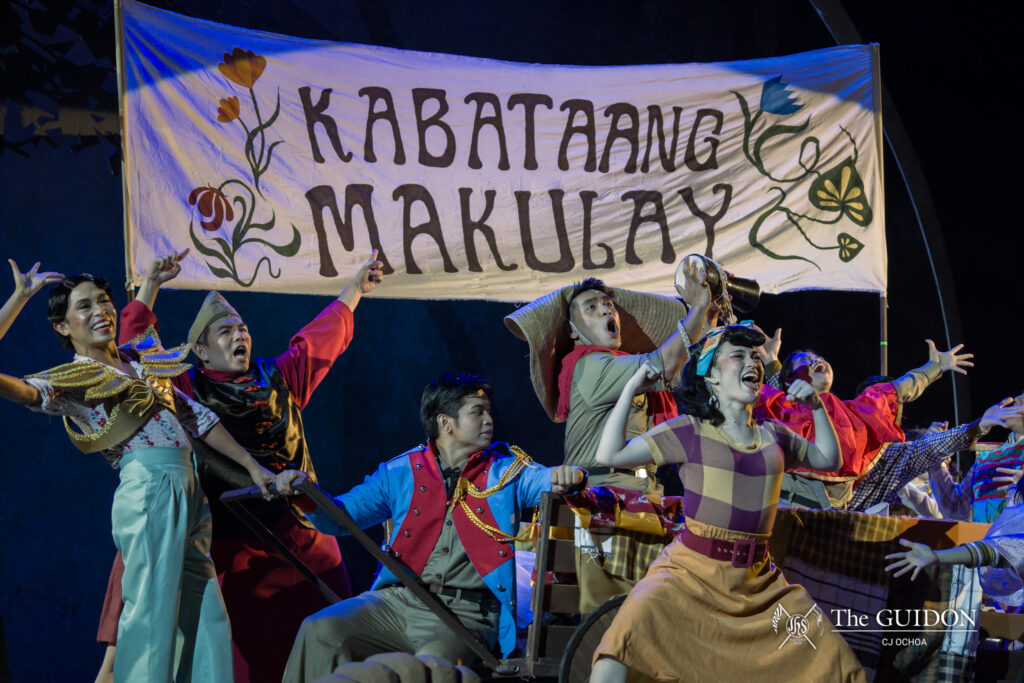
The show-stopping ensemble is dynamic enough to balance this star-studded lead cast, with Salomon and Pangilinan reprising their roles from the 2022 rendition. Their chemistry returns stronger than ever, but the magnetism of Dela Cruz’s portrayal of Christian is powerful enough to make the love triangle equally compelling and all the more polarizing.
On the other hand, Palmos’ Rosanna shines brighter than ever, with a stage presence that commands each scene she is in. Jilian Ita-as and Jerom Canlas, as Gabriel and Tato, respectively, tug on our heartstrings with their genuine portrayal of a young couple amid the war. With their entertaining sibling-like dynamics, Brian Sy’s Maximo and Ericka Peralejo’s Carissa also stand out, striking in every scene they are in.
Furthermore, Meliton Roxas Jr. and Ohm David’s lighting and set design, respectively, complement the entire cast’s brilliance, proving itself to be more daring than the musical’s last run. The production flaunts grander, more innovative sets with intricate moving parts that transport viewers into 1940s Manila. Roxas Jr. and David’s collaborative artistic efforts lend us the eyes of a dreamer—juxtaposing pictures of old Escolta with the luminescence of a bigger, brighter moon. The spectacle is further elevated by the use of light projections onto the stage, from animated roses to twinkling constellations.
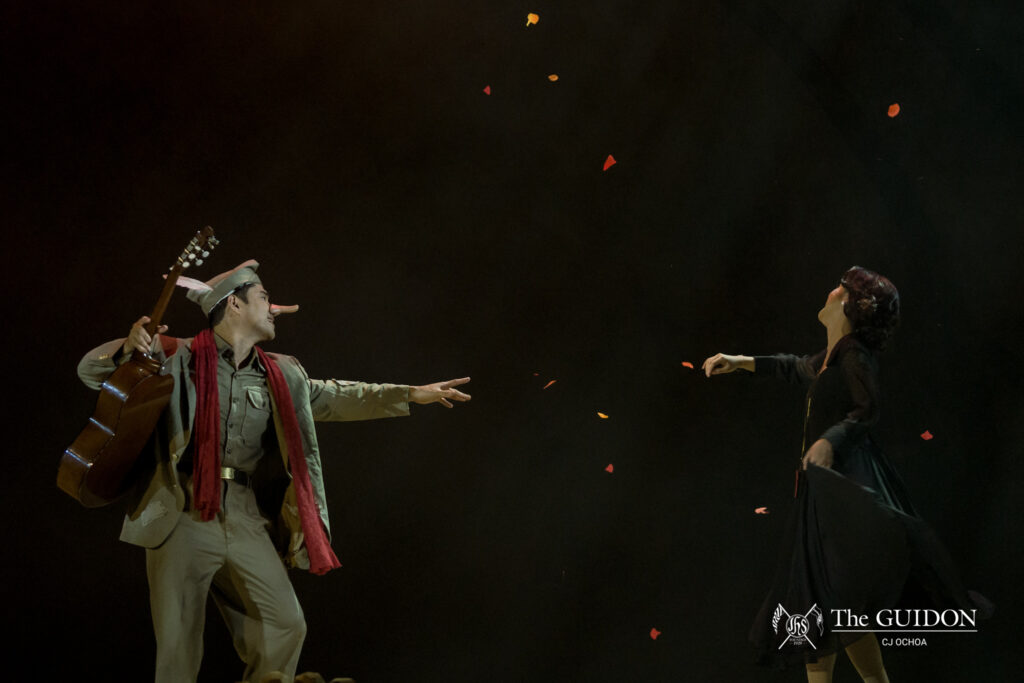
This significant enhancement of the show’s visual presentation brings the point of the show home. By contrasting the grim realism of the mise-en-scène with the dreaminess of the projections, the production poses the question: how exactly does one remain optimistic amid the worst of realities?
What Mula Sa Buwan teaches us is that we don’t exactly have to. This is apparent in Roxane’s powerful ballad at the end of the show, Tahan Na, in which the lyrics go against the common Filipino mindset of toxic positivity and resilience. Pangilinan sings us a lullaby reassuring us that in allowing ourselves to cry, the darkness and its troubles shall also pass.
Indeed, modernizing a story like this in the form of sarswela is a challenging feat, let alone making sure that it also appeals to today’s audience. However, Pat Valera and William Elvin Manzano’s lyricism, paired with Myke Salomon’s music direction, becomes the ribbon that ties the show together. Their usage and blend of blues, jazz, and kundiman styles highlights the timeless Filipino tendency to turn to the arts and music as a means of coping with life’s hardships. Similar to Cyrano’s dedication to writing and theater despite the ongoing war, the show encourages us to embrace love in all its forms, portraying it as the most tender form of protest.
Admittedly, though, I acknowledge that the musical does have its gaps in closing storylines, especially given its nearly three-hour runtime. However, I also believe that the world they have created is expansive and concrete enough to leave unanswered questions for the audience to ponder. With such a strong narrative foundation, the play stands firmly on its own no matter the interpretation of its viewers.
Truly, Mula Sa Buwan is a production that transcends time and the Filipino experience. It is one that is worth retelling and re-envisioning. Every stage it lands on becomes its very own moon, bringing its audience along a starry-eyed yet lifelike journey—a dream jaded souls like me do not want to wake up from.


